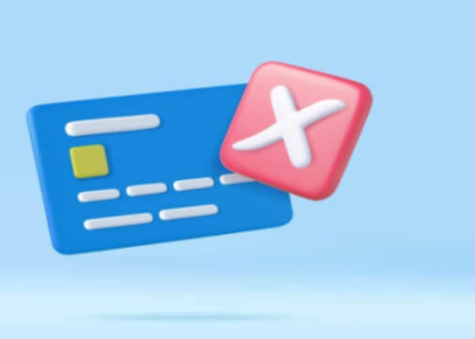Is Paying to Delete Collections a Good Strategy for Improving Your Credit Score?

Dealing with collections on your credit report can feel overwhelming. It can cause financial stress, limit your ability to access credit, and hinder your financial progress. The idea of improving your credit score often leads many to ask: “Is paying to delete collections a good strategy?” The process of pay to delete collections has gained traction as a potential way to eliminate negative marks from your credit report. But is it effective?
In this blog, we’ll walk through the details of paying to delete collections, including how it works, who benefits from it, and the considerations you need to be aware of. By the end, you’ll have a clearer picture of whether it’s the right move for your credit repair plan.
What Does Pay to Delete Collections Mean?
The pay-to-delete collections strategy involves negotiating with a debt collector to remove a negative item from your credit report in exchange for payment. While not explicitly prohibited by the Fair Credit Reporting Act (FCRA), this practice is controversial and not universally accepted. Credit bureaus generally discourage pay-for-delete agreements because they can compromise the integrity of credit reporting.
How Pay to Delete Collections Works
To successfully implement a pay to delete collections strategy, it’s essential to understand how it works in practice. When you’re faced with a collections account, here’s what you should know:
- Initiate Negotiation:
- Contact the collection agency handling your debt.
- Express your intent to pay off the debt and inquire if they would be willing to remove the collection from your credit report upon full payment.
- Make a Written Agreement:
- It’s essential to get any agreements in writing before making any payment. Verbal agreements may not be enforceable.
- Ensure the agreement clearly states that the collection will be deleted from all credit reporting agencies (Equifax, Experian, and TransUnion).
- Pay Off the Debt:
- Once the agreement is made, proceed with paying off the debt. This should be done by the terms outlined in your contract.
- Follow Up and Confirm Deletion:
- After making the payment, monitor your credit report to ensure the collection is indeed removed. If not, contact the collection agency and remind them of the terms of the agreement.
By following these steps, you have a chance to remove negative marks from your credit report, thus improving your credit score.
Why Consider Paying to Delete Collections?
For some people, pay to delete collections can be an appealing option for improving their credit score. Here’s why:
- Immediate Improvement: Paying collections and removing them from your credit report can result in an immediate boost to your credit score, especially if the collection was one of the more recent or significant marks on your report.
- Potential for Better Loan Terms: A higher credit score often results in more favorable interest rates on loans, mortgages, and credit cards. The better your credit score, the more likely you are to qualify for favorable terms.
- Cleaner Credit Report: Removing a collection account from your credit report means you have a cleaner credit history, which can improve your overall financial image.
- Faster Recovery: By paying off the collection and ensuring its deletion, you may be able to recover from past financial mistakes more quickly than relying on waiting for the collection to age off your credit report.
Considerations Before Paying to Delete Collections
While the pay to delete collections method may seem like a quick fix, there are several factors to consider before taking action.
- Not All Agencies Will Agree:
Not all collection agencies offer the pay-for-delete option, and even those that do may not always honor the agreement. It’s essential to approach agencies carefully and ensure that everything is in writing.
- Potential Scams:
Be cautious when negotiating pay-for-delete agreements. Some collection agencies may promise to delete the record but fail to follow through after the payment is made. Always keep documentation and contact information.
- It Might Not Work for All Accounts:
Some creditors, particularly prominent ones such as healthcare providers or utility companies, may be less likely to remove collections in exchange for payment. They may prefer to mark the account as “paid” rather than delete it altogether.
- Impact on Credit Score May Vary:
While removing a collection can improve your score, the extent of that improvement can vary based on other factors in your credit report, such as existing debt or payment history.
Read Also: Dumpsters Cape Coral: Trusted Waste Solutions by WasteLogic Dumpsters
The Pros and Cons of Pay to Delete Collections
Before deciding whether to pursue this strategy, it’s helpful to weigh both the advantages and disadvantages.
Pros:
- Quick Score Improvement: Removing a collection account can significantly boost your credit score.
- Less Negative Impact: Collections can stay on your report for seven years, so paying and deleting them accelerates your path to a better credit score.
- Cleaner Credit Report: With a deleted collection, your credit report appears cleaner and more attractive to lenders.
Cons:
- Not Guaranteed: Not all collection agencies will agree to the pay-for-delete arrangement, and it’s not a foolproof solution.
- May Not Lead to Long-Term Improvements: If other negative items are present on your report, removing one collection may not result in long-term improvements.
- Costly: Paying off a debt in full may not always be feasible for all consumers, especially when the amount owed is substantial.
Potential Benefits of Pay to Delete Collections
The pay to delete collections strategy isn’t suitable for everyone. However, specific individuals may benefit more from this approach.
- Consumers Seeking to Rebuild Credit Quickly: If you have several collection accounts and aim to boost your credit score, paying to have them removed may offer a quick way to improve your financial outlook.
- Borrowers Looking for Better Loan Terms: If you’re in the market for a mortgage or auto loan, removing collections can help improve your credit score and give you access to better financing options.
- Those Who Can Afford to Pay Off the Debt: It’s essential to have the financial ability to pay off the debt before pursuing this strategy.
How to Approach for Pay to Delete Collections
For credit grantors, debt buyers, healthcare providers, utility companies, and other owners of consumer receivables, the pay to delete collections method can be beneficial when handled appropriately. If you’re in this industry and receive requests from consumers for pay-to-delete agreements, consider these best practices:
- Be Transparent: Ensure clear communication about your policies on pay-for-delete agreements. Outline any conditions, and ensure the deal is fair for both parties.
- Know the Legalities: Be aware of the Fair Debt Collection Practices Act (FDCPA) and the guidelines set forth by credit reporting agencies before engaging in any pay-for-delete discussions.
- Offer Alternatives: If a pay-for-delete agreement isn’t an option, consider negotiating a settlement or alternative payment arrangements that might still benefit the consumer without removing the collection.
Alternatives to Pay to Delete Collections
While pay to delete collections is one option, other credit repair strategies might be worth considering:
- Disputing Inaccurate Information: If the information in the collection is inaccurate or outdated, dispute it with the credit bureaus. You can have the item removed without incurring any charges.
- Debt Settlement: Instead of paying off the full amount, debt settlement may reduce your overall payment.
- Goodwill Adjustment: Contact the creditor and ask for a goodwill deletion of the collection, especially if you have a good payment history with them.
- Wait for Automatic Removal: Collection accounts typically remain on your credit report for seven years. Over time, their impact on your credit score diminishes.
Conclusion
The pay to delete collections strategy can be an appealing option for improving your credit score. However, it’s essential to weigh the potential benefits against the challenges and uncertainties involved. Before proceeding, ensure you understand the legal implications, the likelihood of success, and consider alternative methods for addressing collection accounts. Consulting with a financial advisor or credit counselor can provide personalized guidance tailored to your situation.
For more information on the pay-for-delete method in debt collections, visit Southeast Client Services.






